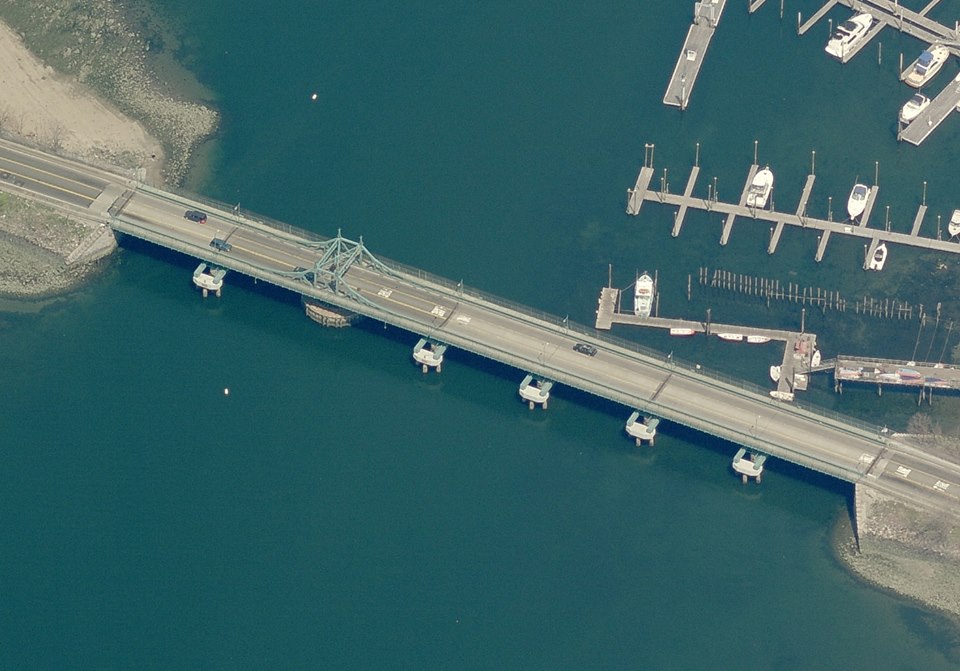
On May 28, 2014, City Islanders and Friends submitted to NYC DOT four (4) questions about the "newest" proposed City Island Bridge raised by members of the 1200 + member Facebook group. This was the day before their scheduled "Open House" at P.S. 175 on May 29, 2014.
The group founder was hoping to avoid "We'll get back to you" and was given assurance that they would be prepared to answer my question the next day at the public event, but that was not to be.
After waiting for over 6 weeks and several follow-up calls, they've responded in writing.
1. Construction Materials/ Strength and Durability. The existing bridge has served us well for 113 years and remains functional. What construction material considerations/features will enable this new causeway bridge to be built as durable as the existing bridge, especially with the added challenges of heavier vehicles, heavier traffic, and climate change? Will these materials absorb traffic sounds or amplify them to cause noise pollution? We've heard that the existing piles will be used, yet the argument for the cable-stayed bridge was that the piles corroded from the water. How is it that now these 100-year-old piles are good enough to build a new causeway on?
The new bridge will be constructed with steel and concrete and reinforced to meet all current vehicular federal and state load ratings. The materials will not amplify sound.
The 100-year-old piles referenced here underwent a significant rehabilitation in the late 1970s in which new piers and horizontal supports were installed. The existing pile locations are being investigated for re-use, not the existing piles themselves.
2. Elevation / Climate Change. From what we've been told, the proposed bridge has been elevated somewhat but is it sufficient to meet the formidable challenges of climate change and increasingly more frequent and more severe storms? How do we know that the elevation of the bridge will be sufficient to stay above rising water levels? Shouldn't it be built both higher and stronger than our existing bridge, to accommodate climate change?
The new bridge will be 2.9 feet higher than that of the existing structure meeting all current federal standards.
3. The Temporary Bridge. Should we forgo the temporary bridge with this new causeway design? Is it even needed, given the less complicated construction of the causeway bridge? Could a Storm like Sandy destroy the temporary bridge? Is the temporary bridge going to be strong enough, should we make it stronger, or avoid it altogether? The temporary bridge 1) adds to the total construction time; 2) delays the date of completion; 3) adds to cost; 4) is less safe/reliable under some conditions. Should we eliminate the temporary bridge from the plan and simply build the new bridge along side the existing bridge?
Construction of temporary bridge is still necessary to maintain access to the community during demolition of the current bridge and construction of the new bridge. This temporary structure will be built to accommodate the same current vehicular traffic and climate conditions as the existing structure.
A new bridge cannot be built along side the existing bridge. Between the Bronx mainland and City Island there exists a mapped “right of way” corridor over the water, which is under the jurisdiction of the New York State Office of General Services. Construction of the new bridge must occur within (and only within) this mapped right of way. Part of the ULURP application was a minor modification to this right of way to allow a slightly wider bridge to meet current federal and state codes for width of travel lanes. Therefore the new bridge cannot simply be permanently built south of the existing bridge.
4. Appearance. The existing bridge, with piers, has a proven track record, is compatible with its surroundings, and should be rebuilt, say 75% of our surveyed members.
The new causeway bridge is much closer to the existing bridge in design, but lacks any unique decorative features that the existing bridge has. City Planning designated The Special City Island District to preserve the "character" that is vital to our economy and "unique identity."
But the "plain vanilla" design lacks both unique identity and character. Is it possible to add some decorative "nautical" features to make it look less generic and more in sync with the Special City Island District?
During community meetings and specifically the project Open House, community members expressed interest in the development of a “gateway treatment” for the bridge at the entrance to City Island. Designers at DOT are currently evaluating possible areas in the vicinity of the bridge for the addition of an architectural feature inspirited by the current design that would act as a design enhancement. Concepts for a possible treatment will be presented to the community at future meetings.